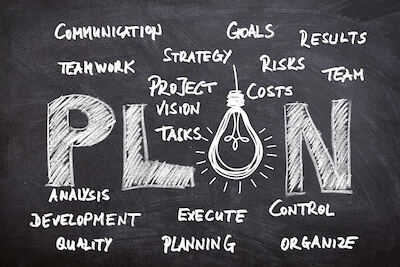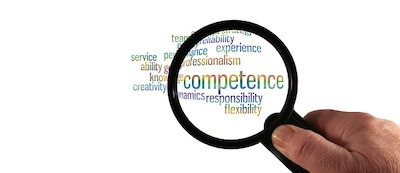Coaching to Develop Better Boards for Small Nonprofits
- Home
- Small Nonprofit Practices
- Coaching to Develop Better Boards for Small Nonprofits
Coaching to Develop Better Boards for Small Nonprofits allows you to think about the vision, effectiveness and working relationships of the board members of your organization.
These men and women will determine and oversee the direction of the organization. Their role is often critical in small organizations.
It's simply not good enough to look for "warm bodies" to sit on a board. This tool will help you be the best board you can be.
1. The Board Has a Clearly Articulated
Vision for the Organization

This is Practice 1 of 80
A Board must have a vision of where they want to go. Period. Otherwise they are just maintaining 'what is'.
- Do you exist just to maintain everything exactly the way it is today or is there something more or larger that draws you forward?
If your concept of the future is to maintain 'what is' that may be ok. On the other hand it also could mean you are content not to grow in any direction at all.
Every Board member ought to be in agreement with a clear, simple statement of what you collectively feel you exist to accomplish.
- Is that statement of direction sufficiently attractive to each Board member? Senior staff?
- Does it serve to inspire and draw you forward or is it a restatement of well known and general ideals?
Why This Practice is Important to Me As a Leadership Coach
I've met well-meaning people who have been asked to sit on a board, who can't tell you what the critical aim of the organization is. They are happy to serve, but just aren't aware. Nor can they actually articulate how to best contribute to the board.
Often they are looking to someone else they respect to show them the way forward. And that can simply make them "yes men" or "yes women."
As I am coaching to develop better boards for small nonprofits, I recognize these men and women have something significant to offer. But they need to know what it is and how to use it. An essential beginning to that is being on board with the vision for the organization.
The Key Concept, Attitude or Action That Drives This Practice
VISION
The board carries and articulates this important statement of direction.
An Expansive Thought
Yesterday's ideals of what can be may not carry you into the future - they have already been reached.
An Action Point
Fresh clarity generates fresh ideas, approaches and momentum.
2. An Operational Master Plan is in Place to Achieve the Vision

This is Practice 2 of 80
No vision – no master plan. No plan – no action or at least ineffective action. And no action – no results. No results – no benefit delivered.
Take the time to plan.
The time spent developing a key plan that stretches out some distance in the future will pay off handsomely.
Master plans need to be flexible to respond to new developments that may open up. Taking the time needed to develop and update a good plan will assist in decision making at every meeting for years to come.
- Do you have a comprehensive plan?
- What would it take for you to develop a 5, 10 or 20 year plan? Is such a length reasonable? Practical? What benefit would there be to various lengths of strategic plans?
- Discuss any philosophical reasons you may have difficulty with in doing this. How will you make your plan responsive to new directions, yet fixed enough to serve as the major tool for future development?
Why This Practice is Important to Me As a Leadership Coach
If a vision answers to 'what', a comprehensive plan answers to 'how'.
Good boards refer to a plan. They hold it carefully, ready to pivot when it's deemed prudent to do so. But for the most part that plan is their guiding light to take the organization forward, maybe 3 or 5 years.
Most of my clients value the thought partnership I bring to our calls. They have an opportunity to play with ideas without judgment and without somebody putting some wild idea they played with and dismissed, on social media.
Similarly, a board needs to be a fertile and safe place to think, to take ideas and options and test them through the thinking of each board member. A master plan gives them something to weigh that idea, option or thinking against, to see how it fits into the bigger picture of where you are going.
That back and forth is really important, and in coaching I encourage it, and endeavor to foster it.
The Key Concept, Attitude or Action That Drives This Practice
MASTER PLAN
A good plan is specific, measurable, achievable, realistic and time bound -SMART
An Expansive Thought
A master plan doesn't bind, it allows God to guide.
An Action Point
A multi-year plan will stretch both thinking and possibilities.
3. Board Members are Competent to Work Effectively on a Board

This is Practice 3 of 80
Being a competent Board member generally doesn’t just happen. It is learned.
If there is no training in place, start. If you have started, make it even better.
The Board can make or break the organization by their pattern of attitudes and actions. Develop knowledge, skills and attitudes, both task oriented and people oriented.
- What training are you aware of that would assist people to be more effective and competent Board members?
- What experience lies within your Board that could be tapped by way of a presentation or training for other members?
- What standards do you have for the addition of new Board members?
- Is there a training process for those who might consider being Board members?
This would allow you a pool of dedicated, more highly trained people.
Why This Practice is Important to Me As a Leadership Coach
Good board members are intentional about developing skills. Let's face it, some people should not be on the board. They should step down immediately.
But if you are on a small nonprofit board, and you really do want to be a high-value contributor, then learn how to best do that in the context of your organization.
I am often coaching leaders around something that has come up on a board they happen to sit on. They value coaching on how to make the best contribution they can.
As I provide coaching to develop better boards for small nonprofits, there are times where it seems apparent to me that an individual isn't a contributor to board deliberations but a distraction, or worse, a deterrent.
If it's my client, I ask if it isn't time for them to step down. More often it's my client who may ask the board member to resign, or take steps with the board for their removal. Not easy but necessary. And thankfully, not often.
The Key Concept, Attitude or Action That Drives This Practice
TRAINING
Board specific orientation is a must for the new board member.
An Expansive Thought
Effective boards are intentional about who they bring to the board.
An Action Point
Tapping the skills, good attitudes, knowledge and assets of the individual strengthens the team.
4. Board Members Regularly Assess Their Effectiveness

This
is Practice 4 of 80
Just as regular reviews assess effectiveness of the Executive Director or other senior staff, Board members should take a good look at their own personal presence and contribution to the purposes of the organization.
Many small organizations suffer because of Board members who should have left some time ago. It is only politeness that keeps them on under a thick veil of frustration. Is the passion for the work still there?
Develop a tool that will allow members to assess themselves and make appropriate decisions regarding their service on the Board.
- How will you know if members are getting lukewarm, and what will you do about it?
- Can a Board member leave without being judged in any way?
- How does your Board rotate? Is it serving you well? If not, what can you do to address it?
- Is your review non-threatening to members, engaging their best interest for the organization?
Why This Practice is Important to Me As a Leadership Coach
Assessing how well you are doing contributes to increasing effectiveness. The best people today are tired of aimless, unproductive and long meetings, hampered by unprepared colleagues.
From any angle I work, I endeavor to encourage a drive to be more effective. It's the only way to keep good people. Coaching helps leaders assess their own effectiveness in an honest and non-judgemental way.
We can all do better. We just need to be intentional about getting there.
The Key Concept, Attitude or Action That Drives This Practice
REVIEW
Knowing when the passion is decreasing and then making an exit is ok.
An Expansive Thought
What works well may be more important than what has always been done.
An Action Point
Find out what keeps members more knowledgeable, in touch and active.
To move from Coaching to Develop Better Boards for Small Nonprofits
to the last four practices referring to boards, go to:
Leadership Coaching to Help Small Boards Improve How They Work.
To review other practices, return to Small Organization page and choose topic.
What Will You Take Action from Coaching to Develop Better Boards for Small Nonprofits?
You have gained insight from Coaching to Develop Better Boards for Small Nonprofits.
If that reveals room for improvement, and gives you lots to work on, you might like to connect with me to discuss working together. We can explore your situation and discuss what might be possible.
To discuss leadership and executive coaching, contact me here.
Contact me here Privacy Policy
© G.E.Wood and Associates. All Rights Reserved in all media.
G.E. Wood and Associates is an international coaching firm registered in Ontario, Canada
142 Pratt Crescent, Gravenhurst, Ontario, Canada, P1P 1P5